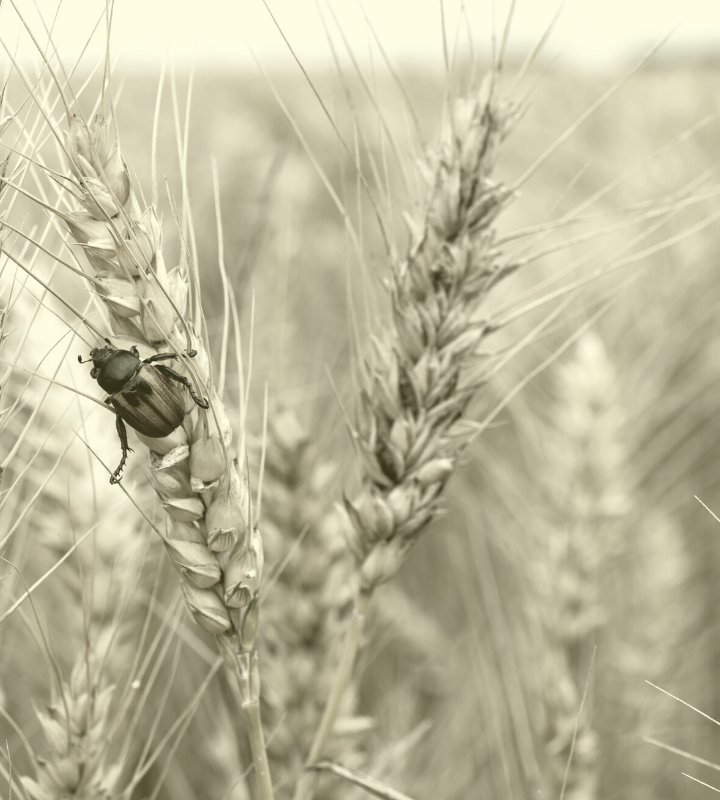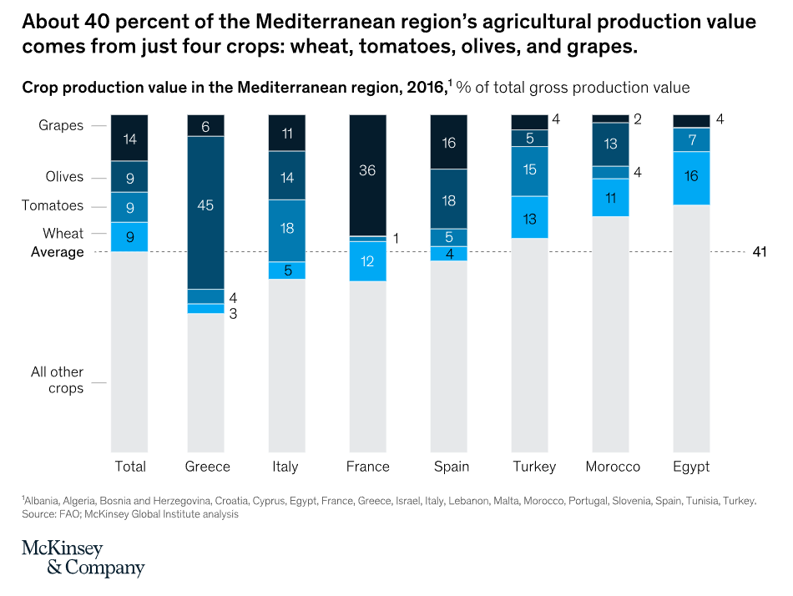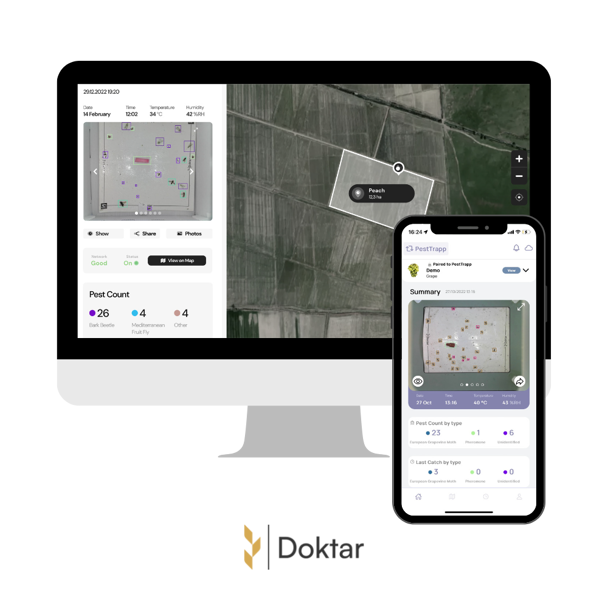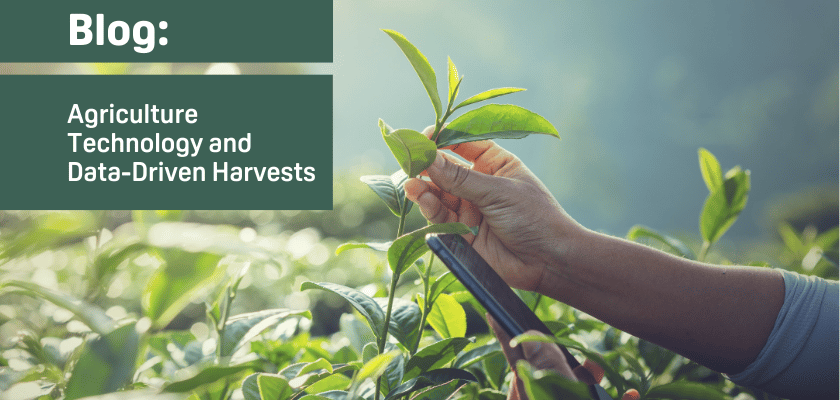

Pest Management in Climate Change Mediterranean
Earth's temperature has fluctuated over 4.5 billion years. Recently, temperatures have risen sharply due to human activities, leading to significant ecological and societal impacts. Over the past century, temperatures increased by 1°C, with projections to rise to 1.5°C by 2050. This affects agriculture, water availability, and pest management.
Published on 14 June 2023
Earth Temperature History
Over the course of its 4.5-billion-year history, the Earth's temperature has fluctuated greatly. There have been times when the planet has been covered in ice, and other times when it has been much warmer than it is today. However, over the past century, the Earth's temperature has been rising at an unprecedented rate, largely due to human activities. This phenomenon, known as global warming, is having significant impacts on the planet's ecosystems and human societies, and is a major issue that needs to be addressed.
How much has temperature risen in the last 100 years? How much will the temperature rise by 2050?
According to NASA, the Earth's average temperature has risen about 1.0°C since the late 19th century. Scientists project that the temperature will continue to increase and could reach 1.5°C above pre-industrial levels by 20501.
Rising temperatures will have a major effect on agriculture impacting crop yields and distribution, water availability, and pest and disease management. Doktar provides integrated AI technologies to assist in the development of sustainable and resilient agricultural practices. Examples include precision agriculture and smart irrigation systems.
Climate Change in the Mediterranean
The Intergovernmental Panel on Climate Change (IPCC)’s recent report identified the Mediterranean region as a climate change hotspot. This region is warming 20% faster than the global average2 of around 1.1-1.3°C.
Humans must take urgent action to avoid drastic temperature increases in the Mediterranean. Even if immediate actions we 21003, it will likely be 2-4 °C hotter than in the 19th century. As temperatures rise, the Mediterranean climate could change in ways that increase wildfires, floods, and the risk of drought.
According to the management consulting firm McKinsey, the effects of drought will become more severe in Italy, Portugal, Spain, and parts of Greece and Turkey in the coming years. Rainfall during the dry season in April through September is expected to decrease by 10 percent in 2030 and 20 percent by 2050. These regions could face drought conditions for at least six months out of every year by 20504.
What is drought? What is caused by drought? What are the effects of drought? What is the impact of drought on agriculture in the Mediterranean?
Drought is a prolonged period of abnormally dry weather, typically leading to a severe water shortage. Several factors may cause drought, such as lack of rainfall, high temperatures, and changes in weather patterns.
Drought can have devastating consequences, especially in areas where agriculture is a big source of revenue. The Mediterranean is one example of such a region. Nearly half of the region's production value comes from four crops: grapes (14%), wheat, tomatoes, and olives (9% each). Mediterranean countries produce about 90% of the global wheat, tomato, and olive supply5.

Drought can affect agriculture in devastating ways, especially in regions that are already water-scarce, such as the Mediterranean. Crop failures can occur due to a lack of rainfall and high temperatures. This can lead to food shortages and economic damage for farmers and agricultural workers.
Pests can increase in number when conditions are favorable as such. This can reduce crop production, resulting in decreased food security. Ultimately, this can lead to higher food prices for consumers.
What is a pest? What is pest control? What is the best way to prevent an infestation?
Pests are organisms that cause damage to crops, structures, or people. Pest control is the management of these organisms to prevent or minimize their negative impact. Pest control services and methods include physical, chemical, and biological strategies.
Doktar offers the best pest control with PestTrap, a digital pest-tracking station. PestTrap is a pest control service that attracts pests with pheromones and uses image processing technology to identify pest types. PestTrap then notifies users via the IoTrack mobile app when the pest population density reaches a risk threshold.

Effect of Climate Change on Pest Populations and Pest Inspections
Climate conditions such as temperature, precipitation, moisture content, and air composition influence the spread and population size of plants, as well as the type and number of pests living in a particular area. Increased temperatures will increase pest populations and affect pests in terms of several factors6:
-
geographical range
-
overwintering
-
population growth rates
-
number of generations per annum
-
crop–pest synchronization
-
dispersal and migration
-
availability of host plants and refugia.
Warming could decrease the occurrence of severe cold events, thus expanding the overwintering area for insect pests. Overwintering is how an insect passes the winter season. Many insects overwinter as adults, pupae, or eggs inside buildings, under tree barks, or beneath fallen leaves or other plant matter on the ground, among other places. During the winter months, an increase in population size is seen, setting the stage for further growth during the next season.
Temperature increases can lead to higher levels of feeding and growth for pests. This could mean additional generations in a given year and a change in crop yield. It could also impact the effectiveness of integrated pest management practices.
Increased global temperatures will also impact the phenology of insects, causing them to appear earlier in their agricultural habitats. This early emergence will require earlier and more frequent application of pesticides in order to reduce pest damage. Higher temperatures will also cause an increase in pest populations, where water-stressed plants may experience even further outbreaks. As a result, crop yields and the availability of food grains will decrease, posing a threat to food security.
Mediterranean Fruit Flies in the Black Sea
An example of changed pest behavior can be observed with Ceratitis Capitata, commonly known as the Mediterranean Fruit Fly. The Mediterranean Fruit Fly, although not native to the region, appeared for the first time in the Black Sea Region7. Because the Mediterranean Fruit Fly is specific to the Mediterranean and the region’s unique climate, its growth is temperature dependent. So, when the temperature changes globally, some areas become more suitable for new pest types with their new climactic range.
Adapting to the impacts of climate change on pests in different ecological territories is a challenge. Monitoring population levels and insect behavior in sensitive regions over a long period of time is one standout solution. The most efficient way to inspect and monitor pests on a micro level is with digital pest trackers. PestTrap is one such device.
Climate change and higher temperatures can cause a rise in pest populations, changing overwintering, feeding, and growth patterns. This change can damage crops and put food security at risk. As a result, food producers must adapt their pest control mechanisms to keep up with the changing environment. Adaptation must track micro changes in pest types and pest appearance dates. Digital pest trackers such as PestTrap can help monitor and manage pest populations in different agroecosystems efficiently and on time.
For those interested in exploring how Doktar's innovative solutions can transform your agricultural practices, visit our website for detailed information on all our products. Stay updated with the latest developments by following us on Instagram and LinkedIn, where we share insights, tips, and updates about our technologies and their impact on modern farming.

Agriculture Technology and Data-Driven Harvests
The convergence of agriculture technology and data-driven solutions represents the next frontier of innovation in farming. With companies like Doktar leading the way, farmers can leverage these advancements to improve productivity, reduce environmental impact, and secure a more sustainable future for agriculture. Whether through precision agriculture, sustainable agriculture, or cutting-edge smart agriculture technology, the future of farming is bright, and data is at the heart of this transformation. Technology's positive impact on this future should inspire and motivate us all.

Integrating Crop Health Monitoring Systems for Better Farm Management
Crop health monitoring systems revolutionize modern agriculture by enabling real-time insights into plant health, reducing losses, and promoting sustainability. Tools like Doktar’s CropMap and Orbit integrate advanced technologies, empowering farmers with data-driven decisions. By enhancing efficiency and sustainability, these systems are essential for future-proofing agricultural operations.

Modern Agriculture: Innovative Solutions to Combat Global Food Insecurity
Modern agriculture combats global food insecurity with precision agriculture, sustainable practices, and biotechnology. Tools like IoT, automation, and crop innovations optimize resource use, enhance resilience, and ensure stable food supplies. By integrating smart technologies, agribusinesses address challenges like climate change and resource scarcity, paving the way for a sustainable food future.
